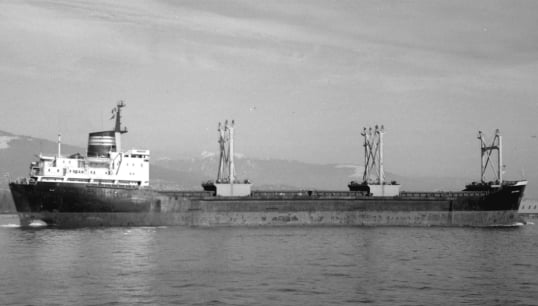Sugar Producer

The Sugar Line
Entering into service in 1968, the 21,175dwt bulk carrier Sugar Producer was one of the last vessels built for the Sugar Line fleet, which had been established by Tate & Lyle in 1950 as a joint venture with the United Molasses Company and the West Indies Sugar Company.
The build
Built at the Lithgows yard in Port Glasgow, Sugar Producer and sistership Sugar Crystal were the largest Sugar Line ships until the arrival in 1974 of the 28,599dwt Sugar Carrier and 28,949dwt Sugar Trader – the final pair of vessels to join the fleet.
Although Sugar Line had been created with the core role of shipping sugar from the Caribbean to refineries in London, Liverpool and Canada, the ships often operated on the basis of voyage charters, arranged by a specialised subsidiary, Kentships. As a result, they could trade as far afield as Japan and Russia, and carried cargoes ranging from asbestos to pig iron, grain, coal, cement clinker, steel, soya beans, paper, phosphates and even double-decker buses.
Tate & Lyle Shipping
In 1973 Tate & Lyle merged the Athel Line fleet of molasses tankers with Sugar Line to create Tate & Lyle Shipping. However, changes in the global sugar industry and the rise of domestic sugar beet production – coupled with a wider slump in freight rates which saw shipping operations tumble from 32% of the group's profits in 1973 to just 1% in 1975 – resulted in progressive cuts to the fleet from 1976 onwards. In 1979, Tate & Lyle announced that it would be withdrawing from shipowning and would, in the future, use chartered foreign tonnage.
The final years
Sugar Producer was sold in November 1979 to the Greek company Avanti Maritime, switched to the Liberian flag and re-named Cape Avanti Due. The ship continued to operate with some British officers, although it spent some time in lay-up on the Essex coast in 1982. Sold to an Egyptian company in 1986, the ship was sent for scrapping in Taiwan, in November 1987.
Sugar Producer Fact File
How heavy was Sugar Producer?
Sugar Producer had a grt of 13,894
How fast was Sugar Producer?
Sugar Producer had a service speed of 15 knots
When was Sugar Producer scrapped?
Sugar Producer was scrapped in November 1987
Contribute
Are you knowledgeable about this vessel?
Submit your contribution to this article to our editorial team.
Write to usView more ships of the past
HMS Beagle
Launched 200 years ago, HMS Beagle has been described as one of the most important ships in history – thanks to the observations on evolution and natural selection that its famous passenger Charles Darwin made during a five-year voyage around the world between 1831 and 1836.
Common.ReadMoreHMS Beagle
Megara
Originally constructed as an oil tanker in 1929, the Dutch ship Megara went on to become one of the first specialist liquefied petroleum gas (LPG) carriers only five years later.
Common.ReadMoreMegara
Malakand
Launched in November 1918, the Malakand was a sistership to three other vessels and was fitted to train cadets until the shipping slump of the 1920s. With an uneventful early career, the Malakand later became the victim of Liverpool's May Blitz in 1941.
Common.ReadMore